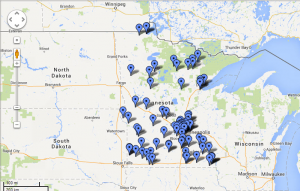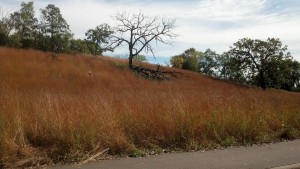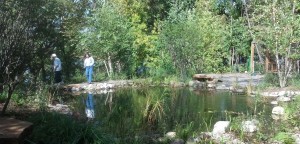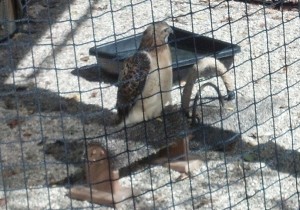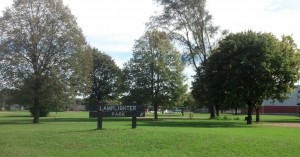This post is back under its original title, with some editorial commentary included. The list of lost courses since 2000 can now be found at this link: Minnesota’s lost courses since 2000: The list.
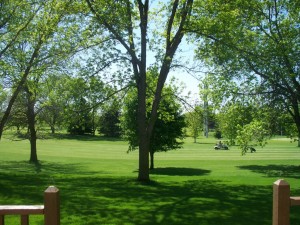
“Modern” lost golf courses aren’t really my strong suit. My focus the past four years and in writing “Fore! Gone.” has been to find courses that were abandoned before the year 2000 arrived. The final curtain, using that parameter, belonged to Rich Acres in Richfield, which witnessed its last four-putt in December 1999 before turning into an airport runway. (And don’t try to catch me with a technicality over when the millennium ended. That has been debated for years, with no definitive answer evident. I’m going with Dec. 31, 1999, as the end of the millennium, whether anyone likes it or not.)
Since then, dozens of Minnesota golf courses have gone the way of dinosaurs. It has been part of a nationwide phenomenon. Golf chugged along in terms of popularity and new-course construction for years, with a particularly strong head of steam in the early 1990s, and without regard to a minority of voices who were sounding warnings of declining participation. It was a supply-and-demand phenomenon. The supply curve was going up; the demand curve was going down; and far too many golf-course developers didn’t anticipate that the twain would unhappily meet. That happened in about 2000, and courses soon began closing.
Since then, the naysayers have ruled. “Golf courses are losing money.” (Yes, many of them are. No arguing that point. And an underreported minority are doing fine.) “Golf takes too long, and it’s too expensive.” (In many cases, true and true. In others, not so much.) “Golf is too hard.” (What, you want me to walk your ball up the fairway another hundred yards, past the bunker fronting the green? It’s not supposed to be easy. That’s part of the game’s often-maddening beauty.) “Golf is dying.” (Give me a break. Every person who types that phrase will die before golf will.)
OK, I’ll shut up and resume the original post from autumn 2013.
Say goodbye to:

Hudson Golf Club: Just across the St. Croix River and the Minnesota border in the Wisconsin city of Hudson, this was the city’s private course for many years. It was established in 1955. It was bought in early 2010 by Hanson Brothers Golf, which also owns and operates River Falls Golf Club, but the Hansons shut down Hudson GC during the 2013 season, saying it wasn’t economically viable. Plans are to turn it into commercial development. Predictably, there is controversy in Hudson over the fate of the site — not so much that the golf course is gone as over what it will become.
Looking at the place only from its perimeters — the property is now posted with dozens of “no trespassing” signs — it looked like a very good golf course site, with elevation changes, water and a variety of trees. The photo above is, I believe, of the course’s southwesternmost hole. No, I didn’t trespass. I took it from a high point of a store parking lot that backs up to the property.
———————————————————————————

Parkview: A cruel joke, or did somebody in Eagan press some mysterious rewind button?
In the early 2000s, a variety of parties in Eagan argued over the fate of Carriage Hills Golf Course, a shortish, 18-hole, public layout that, the owners said, had become unprofitable. Some wanted the course to remain open, some wanted the course to become green space, and some — primarily the course owners — wanted to develop the land. The course closed in 2005, and the accompanying heated debate went all the way to the Minnesota Supreme Court. Ultimately, the land became residential development.
Parkview became Carriage Hills Redux: Same city, similar-style course (18 holes, public, par 63), same scenario (a money-losing proposition for the owners) and same arguments (stay open, go green or plow it under and build homes). The battle was perhaps a bit less contentious than the Carriage Hills battle, but it still stirred emotion. Parkview, which opened in 1966, stayed open for part of the 2013 season before closing.
Incidentally, this three-way tug-of-war between owners, green-space boosters and golfers with emotional ties to the embattled courses is nothing new in Minnesota. Fifty years ago, the same happened in St. Louis Park, as Westwood Hills Golf Course lived out its final days. That course’s remarkable history is covered at length in “Fore! Gone.”
The photo atop this post is from when Parkview was operational. It was contributed by a woman who lives in a home adjacent to the former course. I visited there briefly last week, during a light snowfall, and took the photo just above (click any of these photos for closer looks), while land-movers were razing all evidence of tees and greens and cul-de-sacking away. Incidentally, the aforementioned woman was chagrined — not upset, I wouldn’t say, but chagrined — that her home will be closer to a new home than any other in the neighborhood. The houses will lie 105 feet from each other; zoning laws, she said, require a 100-foot separation.
More background on Parkview can be found in this St. Paul Pioneer Press story: http://www.twincities.com/ci_23143189/eagan-parkview-golf-club-will-reopen-shorter-season
——————————————————————-
Red Oak and Lakeview: The former, a nine-hole course, served golfers in the Mound and Lake Minnetonka areas for 58 years. The latter, an 18-hole layout just 500 yards away, lived to be 45. Both courses were owned by the Wenkstern family. Neither will be open for tee times in 2014.
A tribute to Red Oak and Lakeview can be read at The Laker and The Pioneer website:
http://lakerpioneer.com/2013/08/19/lakeview-and-red-oak-golf-courses-sold-to-developer/
